#FutureOfMobility
Text
Audi Activesphere Concept: The Future of Premium Mobility

View On WordPress
#Audi#AudiActivesphereConcept#ConceptCar#conceptvehicle#electric vehicles#electriccar#Future#futureofmobility#LuxuryCar#Technology
4 notes
·
View notes
Text
#MercedesBenzEQV#ElectricLuxury#FutureofMobility#SustainableDriving#ZeroEmissions#LuxuryEV#ElectricVan#EcoFriendly#EfficientDriving#InnovativeTechnology#AdvancedDesign#LuxuryTravel#ElectricPerformance#GreenMobility#SmartDriving#LuxuryTransportation#EcoConscious#EfficientTransportation#ElectricLuxuryVan#SustainableTransportation#LuxuryElectricVehicle#EcoFriendlyTravel#EfficientLuxury#ElectricLuxuryTransportation#SustainableLuxury#EfficientEcoFriendly#ElectricLuxuryTravel#GreenLuxury#EfficientSustainability#ElectricLuxuryVan2024
0 notes
Text
Electric Three-Wheelers: Revolutionizing Urban Mobility

(Source-.logisticsinsider.in)
In the ever-evolving landscape of urban transportation, electric three-wheelers have emerged as a sustainable, efficient, and versatile solution for navigating city streets. These compact vehicles, also known as e-rickshaws or auto-rickshaws, offer a convenient mode of transportation for passengers and goods alike, while also reducing emissions and congestion in crowded urban areas. This article explores the rise of electric three-wheelers, their benefits, challenges, and their potential to transform urban mobility.
The Emergence:
Electric three-wheelers have a rich history, with roots tracing back to traditional cycle rickshaws and auto-rickshaws found in many parts of Asia and Africa. However, the advent of electric propulsion technology has transformed these humble vehicles into eco-friendly alternatives to conventional gasoline-powered models. Electric rickshaws typically feature a battery-powered electric motor, offering zero-emission transportation without compromising on performance or reliability.
Benefits of Electric Three-Wheelers
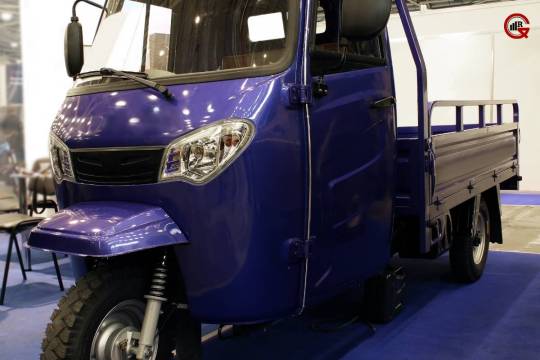
Secondly, electric rikshaws offer lower operating costs compared to their gasoline counterparts. With fewer moving parts and no need for gasoline or diesel fuel, electric vehicles require less maintenance and have lower fueling costs, making them an attractive option for drivers and fleet operators looking to reduce their operational expenses.
Additionally, electric rikshaws are well-suited for navigating congested urban streets, thanks to their compact size and maneuverability. This makes them ideal for short-distance trips, last-mile connectivity, and transportation in narrow alleys and crowded marketplaces where larger vehicles may struggle to access.
The Role in Sustainable Transport
As cities around the world grapple with the challenges of urbanization, congestion, and pollution, electric three-wheelers offer a sustainable solution for meeting the growing demand for affordable, efficient transportation. By replacing conventional gasoline-powered vehicles with electric alternatives, cities can reduce their carbon footprint, improve air quality, and create a more sustainable transportation system for all residents.
Furthermore, electric rikshaws play a crucial role in addressing the last-mile connectivity gap, providing an accessible and affordable transportation option for underserved communities. Whether it’s connecting commuters to public transit hubs, delivering goods to local businesses, or providing transportation for elderly and disabled individuals, electric rikshaws serve as a vital lifeline for communities around the world.
Challenges and Opportunities
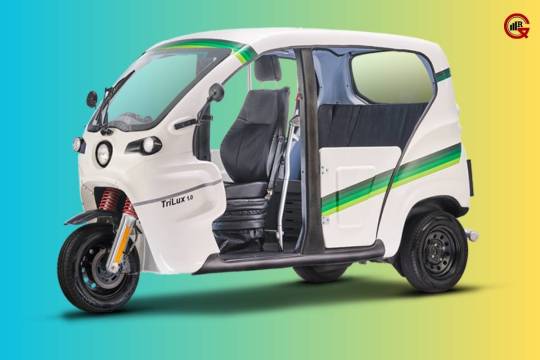
Despite their many benefits, electric rikshaws face several challenges that must be addressed to realize their full potential. One of the primary challenges is the lack of infrastructure for charging electric vehicles, particularly in developing countries where access to electricity may be limited or unreliable. To overcome this challenge, governments and private stakeholders must invest in the expansion of charging infrastructure and incentivize the adoption of electric vehicles through subsidies and tax incentives.
Another challenge facing electric rikshaws is the need for regulations and standards to ensure their safety, reliability, and performance. This includes standards for vehicle design, battery technology, and driver training, as well as regulations governing licensing, insurance, and vehicle maintenance. By establishing clear guidelines and regulations, policymakers can help create a level playing field for electric three-wheelers and promote their widespread adoption in urban transportation networks.
Despite these challenges, electric rikshaws present numerous opportunities for innovation and growth in the urban mobility sector. With advancements in battery technology, electric vehicle design, and smart transportation systems, electric rickshaws have the potential to revolutionize the way people move around cities, creating cleaner, greener, and more sustainable urban environments for generations to come.
The Future
As we look to the future, the role of electric rickshaws in urban mobility is poised to expand further. With increasing awareness of the environmental and social benefits of electric vehicles, coupled with advancements in technology and supportive government policies, electric rikshaws are well-positioned to become a ubiquitous and integral part of urban transportation systems worldwide.
Integration with Smart Mobility Solutions
Electric three-wheelers have the potential to integrate seamlessly with smart mobility solutions, such as ride-hailing apps and on-demand transportation services. By leveraging technology platforms, passengers can easily book rides, track their vehicles in real-time, and pay for their trips electronically, enhancing convenience and accessibility. This integration not only improves the overall user experience but also increases the efficiency of electric three-wheeler fleets by optimizing route planning and vehicle utilization.
Job Creation and Economic Opportunities

The widespread adoption of electric three-wheelers has the potential to create new job opportunities and stimulate economic growth in communities around the world. From manufacturing and assembly to maintenance and charging infrastructure, the electric vehicle industry supports a diverse range of skilled and unskilled jobs, providing employment opportunities for individuals at all levels of the workforce. Additionally, the transition to electric vehicles can help reduce dependency on imported fossil fuels, thereby enhancing energy security and promoting local economic development.
Addressing Range Anxiety and Battery Technology
One of the key challenges facing electric three-wheelers is range anxiety, or the fear of running out of battery power before reaching one’s destination. To address this concern, manufacturers are investing in advancements in battery technology to improve energy density, charging speed, and overall range. Lithium-ion batteries, solid-state batteries, and other emerging technologies hold the promise of extended driving ranges and faster charging times, making electric three-wheelers more practical and versatile for daily use.
In conclusion, electric three-wheelers offer a sustainable, efficient, and affordable solution for meeting the transportation needs of urban communities. By replacing conventional gasoline-powered vehicles with electric alternatives, cities can reduce emissions, improve air quality, and create a more inclusive and accessible transportation system for all residents. As we continue to embrace the promise of electric mobility, electric three-wheelers will play a key role in shaping the future of urban transportation and creating cleaner, greener, and more livable cities for future generations.
0 notes
Text
VCU Architecture and Components for ADAS
April 30, 2024
by dorleco
with no comment
Autonomous Vehicle Technology

Introduction
VCU Architecture and Components
Technological developments aimed at improving vehicle performance and safety are causing a rapid shift in the automobile industry. One significant advancement in this field is the Vehicle Control Unit (VCU).
Recent years have seen considerable advancement in driver support systems for autonomous vehicles, largely due to the rapid development of various sensors, including wireless communications, lidars, radars, and camera systems. The main demands placed on autonomous automobiles are the capacity to travel large distances more safely while reducing the danger of accidents and traffic congestion, and adhering to traffic regulations, all without the need for human intervention.
Like a human driver, the highly developed algorithms of an autonomous vehicle should take into account a greater range of information about the current state of the road as well as the vehicle itself. To allow autonomous vehicles to handle difficult driving conditions like rain and wet roads, the control algorithm must be able to identify roadways with a tolerable margin of error using measurement devices, such as cameras and laser sensors. Autonomous vehicles must make decisions rapidly based on incomplete information in situations that programmers often won’t have thought of, using ethics that must be applied all too rigorously to software.
In this blog, we will look at the VCU Architecture and Components for ADAS, shedding light on its vital role in modern cars:
1. Understanding Vehicle Control Unit (VCU)
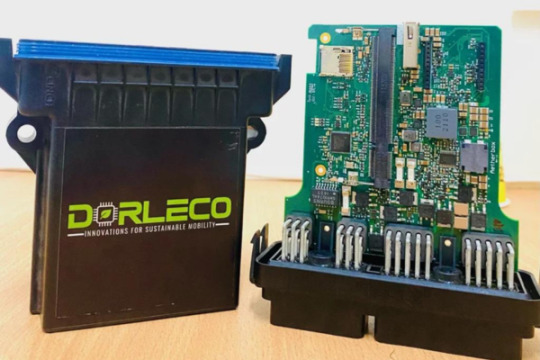
The Vehicle Control Unit (VCU), an essential VCU Architecture and Component in modern cars, regulates several operations. Its primary responsibility is to gather data from the car’s numerous sensors and control systems, evaluate it, and then make decisions that optimize efficiency, safety, and performance.
2 . The architectural design of VCU
The Vehicle Control Unit (VCU) Architecture and Components is a complex network of hardware and software components that work together to ensure the safe operation of the vehicle. The key components of a VCU are as follows:
Central Processing Unit (CPU): The VCU’s brain is its central processing unit (CPU), which manages command execution and data processing. It performs complex calculations and controls data flow among numerous components.
Memory: The Vehicle Control Unit (VCU) employs a range of memory types to quickly store and retrieve data. Random Access Memory (RAM) is used for temporary data storage, whereas Read-Only Memory (ROM) houses the necessary firmware and software
Communication Interfaces: The Controller Area Network (CAN), the Local Interconnect Network (LIN), Ethernet, and other interfaces are used by the vehicle control unit (VCU) to establish connections with other ECUs and sensors.
Sensors: A range of sensors located all over the car provide data to the VCU. Accelerometers, temperature sensors, position sensors, and wheel speed sensors are a few of these sensors. The information from these sensors is used to track driving parameters and vehicle conditions.
Actuators: To control and alter how the vehicle operates, the Vehicle Control Unit (VCU) communicates with actuators, including the engine, braking, and transmission control modules, using the data gathered.
Power Source: A consistent and reliable power source is essential to the Vehicle Control Unit’s (VCU) proper operation. This electricity is usually supplied by the car’s battery.
3. Parts and Functions of the VCU
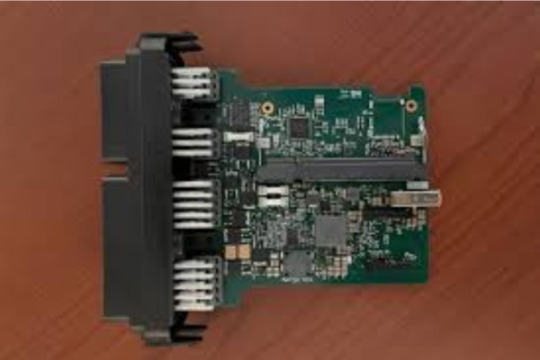
Units of Electronic Control (ECUs): The VCU collaborates with a range of ECUs located throughout the vehicle. Each ECU is responsible for overseeing the operation of a specific subsystem, including the engine, transmission, airbags, ABS (Anti-lock Braking System), and others. The VCU, acting as the central coordinator, gathers information from these ECUs, evaluates it, and makes decisions in light of the findings.
Management of Vehicle Dynamics: One of the most crucial responsibilities of the VCU is vehicle dynamics control. The Vehicle Control Unit (VCU) tracks information from sensors like accelerometers, wheel speed sensors, and steering angle sensors to adjust the vehicle’s stability, traction, and handling to enhance safety and driving performance. Features like the Electronic Stability Control (ESC) and Traction Control System (TCS) are included in this.
Energy Management:
Optimizing energy use and managing power distribution within the vehicle is made possible by the VCU. Ensuring efficient use of electrical power contributes to improved fuel efficiency and reduced emissions.
Diagnostic and maintenance: The VCU can identify defects and issues within the vehicle thanks to its diagnostic capabilities. When an issue is detected, the VCU can save diagnostic trouble codes and activate dashboard warning lights to facilitate service technicians’ diagnosis.
Autonomous Driving: In modern cars with advanced driver-assistance systems (ADAS) and semi-autonomous capabilities, the Vehicle Control Unit (VCU) is crucial for processing data from several sensors (including cameras, LiDAR, and radar) and making decisions for safe autonomous operation.
4. Future Prospects for VCU

VCUs will likely become much more sophisticated as vehicle technology advances. The combination of Artificial Intelligence (AI) and Machine Learning (ML) algorithms will enable VCUs to learn from and adapt to driving habits, leading to more efficient and customized driving experiences. Additionally, VCU advancements will have a significant positive impact on the development of fully autonomous cars.
Conclusion
The Vehicle Control Unit (VCU), an essential component of modern automotive systems, is in charge of controlling vehicle dynamics, energy efficiency, and safety. With a sophisticated architecture consisting of a CPU, memory, communication interfaces, sensors, and actuators, the VCU is in charge of guaranteeing seamless coordination and communication between various electronic control units and sensors within the car. As the automotive industry continues to push technological boundaries, it will become increasingly important for VCUs to shape the future of transportation, paving the way for safer, more environmentally friendly, and intelligent automobiles.
Email [email protected] to learn more about our VCU architecture and component and software development capabilities for battery-specific applications and to explore our superior VCU products and services.
0 notes
Text

𝑹𝒊𝒔𝒊𝒏𝒈 𝑼𝒑: 𝑵𝒂𝒗𝒊𝒈𝒂𝒕𝒊𝒏𝒈 𝒕𝒉𝒆 𝑫𝒚𝒏𝒂𝒎𝒊𝒄 𝑳𝒂𝒏𝒅𝒔𝒄𝒂𝒑𝒆 𝒐𝒇 𝒕𝒉𝒆 𝑬𝒍𝒆𝒗𝒂𝒕𝒐𝒓 𝑴𝒂𝒓𝒌𝒆𝒕 𝒊𝒏 2024
𝑮𝒆𝒕 𝒂 𝑭𝑹𝑬𝑬 𝑺𝒂𝒎𝒑𝒍𝒆: https://www.nextmsc.com/elevator-market/request-sample?utm_source=sanyukta-29-April-24&utm_medium=sanyukta-tumblr&utm_campaign=sanyukta-elevator-market
As urbanization continues to surge worldwide, the demand for efficient vertical transportation solutions is at an all-time high.
Elevators are not just a means of moving between floors; they are the lifelines of modern infrastructure, enabling seamless connectivity and accessibility in high-rise buildings.
Here are some key trends shaping the elevator market in 2024:
1️. 𝑺𝒎𝒂𝒓𝒕 𝑻𝒆𝒄𝒉𝒏𝒐𝒍𝒐𝒈𝒊𝒆𝒔: Elevators are getting smarter, with features like predictive maintenance, destination dispatch systems, and IoT integration revolutionizing the passenger experience and optimizing energy consumption.
2️. 𝑺𝒖𝒔𝒕𝒂𝒊𝒏𝒂𝒃𝒊𝒍𝒊𝒕𝒚: With a growing focus on environmental conservation, eco-friendly elevator solutions, such as regenerative drives and energy-efficient designs, are gaining momentum, aligning with green building standards and certifications.
3️. 𝑺𝒂𝒇𝒆𝒕𝒚 𝒂𝒏𝒅 𝑺𝒆𝒄𝒖𝒓𝒊𝒕𝒚: Enhanced safety features, including touchless controls, advanced monitoring systems, and emergency communication tools, are paramount in ensuring passenger well-being and compliance with rigorous safety regulations.
4️. 𝑪𝒖𝒔𝒕𝒐𝒎𝒊𝒛𝒂𝒕𝒊𝒐𝒏 𝒂𝒏𝒅 𝑫𝒆𝒔𝒊𝒈𝒏: Elevators are no longer just functional necessities but also architectural statements. Customization options, innovative designs, and premium materials cater to diverse aesthetic preferences and enhance building aesthetics.
5️. 𝑼𝒓𝒃𝒂𝒏𝒊𝒛𝒂𝒕𝒊𝒐𝒏 𝒂𝒏𝒅 𝑯𝒊𝒈𝒉-𝑹𝒊𝒔𝒆 𝑪𝒐𝒏𝒔𝒕𝒓𝒖𝒄𝒕𝒊𝒐𝒏: As cities grow vertically, particularly in emerging markets, the demand for high-speed elevators capable of efficiently serving skyscrapers and megastructures continues to soar.
𝑲𝒆𝒚 𝑷𝒍𝒂𝒚𝒆𝒓𝒔: The elevator industry comprises various market players, such as Schindler, Otis Elevator Company, TK Elevator (TKE), Kone Corporation, Hitachi Ltd., Fujitec Co., Ltd, Hyundai Elevator Co., Ltd, Mitsubishi Electric Corporation, Toshiba Elevator and Building Systems Corporation, Winone Elevator Company Limited and others.
Let's elevate together!
#elevatormarket#innovation#construction#manufacturing#smarttech#sustainability#urbanization#futureofmobility#marketresearch#markettrends#businessinsights#marketanalysis
0 notes
Text

Get ready to redefine your everyday ride with TVS iQube! 🛵💨
#bharathtvs#tvsiqube#electricride#everydayride#sustainablemobility#rideelectric#electricscooter#urbanmobility#futureofmobility
0 notes
Text
Navigating the Roads Ahead: Exploring Android Automotive.
Exploring Android Automotive unveils a revolutionary platform that seamlessly integrates Android features into vehicles. With built-in Google services, customizable interface, and extensive app ecosystem, it promises enhanced connectivity, improved user experience, and future-proofing. As a transformative force in automotive technology, Android Automotive shapes the future of intelligent driving experiences.

Read More On Android Automotive.
#AndroidAutomotive#CarTech#ConnectedCars#AutomotiveInnovation#DigitalDriving#SmartCar#TechBlog#AndroidApps#CarTechnology#FutureOfMobility#TechInCars#AutomotiveTech#DigitalDashboard#SmartVehicle#AndroidDevelopment#cyberdefense
0 notes
Text
youtube
Are you ready to ride into the future? Experience the freedom of electric with Gemopai Astrid. Discover more at https://gemopai.com/.
1 note
·
View note
Text
Great news! Make My Day has secured #funding from two prestigious #grants from the Israel Innovation Authority!
These grants are a huge boost for Make My Day, and we're excited to continue innovating in #sustainable urban #mobility#solutions!

European CommissionNisan KatzCnaan AvivHanan KlainerLee paztalDani Zeevi
#Israeliinnovation#Israel#Innovtion#IsraelInnovationAuthority#Grant#Grants#Investment#startup#startupfunding#techinvestments#technology#Hightech#Startup#HorizonEurope#innovativetechnology#fleets#fleet#fleetsolutions#MobilityInnovation#FutureOfMobility#EU
0 notes
Text
youtube
𝐄𝐱𝐜𝐢𝐭𝐞𝐝 𝐭𝐨 𝐰𝐢𝐭𝐧𝐞𝐬𝐬 𝐭𝐡𝐞 𝐫𝐚𝐩𝐢𝐝 𝐠𝐫𝐨𝐰𝐭𝐡 𝐨𝐟 𝐭𝐡𝐞 𝐀𝐮𝐭𝐨𝐦𝐨𝐭𝐢𝐯𝐞 𝐏𝐚𝐲-𝐀𝐬-𝐘𝐨𝐮-𝐆𝐨 𝐑𝐨𝐚𝐝 𝐂𝐡𝐚𝐫𝐠𝐢𝐧𝐠 𝐌𝐚𝐫𝐤𝐞𝐭!
𝐆𝐞𝐭 𝐚 𝐟𝐫𝐞𝐞 𝐬𝐚𝐦𝐩𝐥𝐞 𝐏𝐃𝐅 𝐫𝐞𝐩𝐨𝐫𝐭: https://www.nextmsc.com/automotive-pay-as-you-go-road-charging-market/request-sample?utm_source=debashree_linkedin&utm_medium=debashree_vp&utm_campaign=debashree_automotive_pay&utm_id=debashree_mar&utm_term=debashree_vp&utm_content=debashree_vp
As vehicles become smarter and more connected, innovative solutions like pay-as-you-go road charging are revolutionizing transportation economics. This market's evolution not only enhances revenue streams for governments but also promotes sustainable driving habits.
𝐀𝐜𝐜𝐞𝐬𝐬 𝐟𝐮𝐥𝐥 𝐫𝐞𝐩𝐨𝐫𝐭: https://www.nextmsc.com/report/automotive-pay-as-you-go-road-charging-market?utm_source=debashree_linkedin&utm_medium=debashree_vp&utm_campaign=debashree_automotive_pay&utm_id=debashree_mar&utm_term=debashree_vp&utm_content=debashree_vp
Looking forward to seeing how this trend continues to shape the future of mobility!
0 notes
Video
(via Audi Activesphere Concept: The Future of Premium Mobility)
#AudiActivesphereConcept#Audi#conceptcar#electriccar#luxurycar#futureofmobility#technology#design#performance#lifestyle#gardaran_dot_com
4 notes
·
View notes
Text
#MercedesBenzEQV#ElectricLuxury#FutureofMobility#SustainableDriving#ZeroEmissions#LuxuryEV#ElectricVan#EcoFriendly#EfficientDriving#InnovativeTechnology#AdvancedDesign#LuxuryTravel#ElectricPerformance#GreenMobility#SmartDriving#LuxuryTransportation#EcoConscious#EfficientTransportation#ElectricLuxuryVan#SustainableTransportation#LuxuryElectricVehicle#EcoFriendlyTravel#EfficientLuxury#ElectricLuxuryTransportation#SustainableLuxury#EfficientEcoFriendly#ElectricLuxuryTravel#GreenLuxury#EfficientSustainability#ElectricLuxuryVan2024
0 notes
Text
Advantages And Applications Of Electric Utility Vehicles

(Source-alke.com)
Electric utility vehicles (EUVs) have emerged as innovative solutions in various industries, offering a range of benefits from cost savings to environmental sustainability. As the world continues to prioritize sustainability and efficiency, the adoption of electric vehicles (EVs) in utility applications is gaining momentum. This article explores the advantages and applications of electric utility vehicles, highlighting their impact on different sectors and the growing trend towards electrification.
Understanding Electric Utility Vehicles
They are specifically designed to perform various tasks in utility operations while running on electric power. These vehicles come in a range of sizes and configurations, from compact electric carts to larger trucks and vans. They are equipped with electric motors powered by rechargeable batteries, eliminating the need for traditional fossil fuels.
Advantages of Electric Utility Vehicles
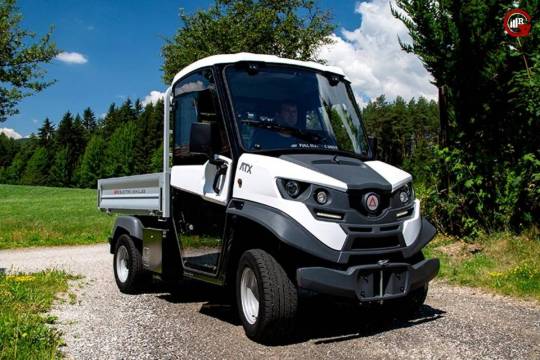
Environmental Sustainability: One of the most significant advantages of EUV is their environmental sustainability. By eliminating tailpipe emissions associated with conventional vehicles, EUVs help reduce air pollution and greenhouse gas emissions, contributing to cleaner air and mitigating climate change.
Cost Savings: While the initial upfront cost of EUV may be higher compared to their conventional counterparts, they offer significant long-term cost savings. Electric vehicles have lower operating and maintenance costs due to fewer moving parts and reduced reliance on fossil fuels. Additionally, as the cost of electricity continues to decrease and renewable energy sources become more prevalent, the cost of charging electric vehicles becomes more competitive.
Quiet Operation: Electric utility vehicles operate much quieter than diesel or gasoline-powered vehicles, making them ideal for use in noise-sensitive environments such as residential areas, parks, and campuses. Their silent operation also reduces noise pollution and improves the overall quality of life in urban and suburban areas.
Energy Efficiency: Electric motors are inherently more energy-efficient than internal combustion engines, converting a higher percentage of energy from the battery into propulsion. This efficiency translates into greater range per charge and lower energy consumption, allowing EUV to cover longer distances on a single charge compared to conventional vehicles.
Reduced Dependence on Fossil Fuels: By transitioning to EUV, organizations can reduce their dependence on fossil fuels and enhance energy security. With the increasing availability of renewable energy sources such as solar and wind power, electric vehicles offer a sustainable alternative to traditional transportation fuels.
Applications of Electric Utility Vehicles

Fleet Operations: EUV are well-suited for fleet operations in various industries, including delivery services, municipal services, and logistics. Companies can electrify their fleets to reduce operating costs, lower emissions, and meet sustainability goals.
Grounds Maintenance: They play a crucial role in grounds maintenance activities, such as landscaping, lawn care, and facility management. Electric carts and trucks equipped with specialized attachments can perform tasks such as mowing, trimming, and debris removal with zero emissions and minimal noise.
Material Handling: In warehouses, manufacturing facilities, and distribution centers, EUVs are used for material handling tasks such as transporting goods, pallets, and equipment. Electric forklifts, tow tractors, and pallet jacks offer efficient and environmentally friendly solutions for indoor and outdoor operations.
Public Transportation: They are increasingly being used in public transportation systems, including electric buses and shuttles for urban and rural routes. These vehicles offer quiet, emissions-free transportation options for passengers while reducing the carbon footprint of public transit systems.
Emergency Services: They are also employed in emergency response and public safety applications, including police patrols, fire department operations, and medical services. Electric vehicles equipped with specialized equipment can navigate congested urban areas and provide rapid response in emergency situations.
Case Studies and Success Stories

Case Study 1: Electric Delivery Vans
A major e-commerce company recently electrified a portion of its delivery fleet by deploying electric vans in urban areas. By switching to electric vehicles, the company reduced operating costs, improved delivery efficiency, and decreased emissions in densely populated areas.
Case Study 2: Municipal Fleet Electrification
A city government implemented a comprehensive fleet electrification program, replacing diesel-powered vehicles with electric utility vehicles in various departments. The initiative resulted in significant cost savings, reduced air pollution, and enhanced sustainability for the city’s operations.
Challenges and Considerations
While EUVs offer numerous benefits, there are also challenges and considerations that need to be addressed for successful adoption.
Infrastructure: One of the primary challenges is the need for adequate charging infrastructure to support electric utility vehicles. Organizations must invest in charging stations and infrastructure upgrades to ensure reliable access to charging facilities, especially for fleets operating over long distances.
Range Limitations: EUVs typically have a limited range per charge compared to conventional vehicles. While advancements in battery technology are extending the range of electric vehicles, organizations must carefully consider their operational requirements and charging capabilities to ensure sufficient range for daily tasks.
Initial Investment: The upfront cost of electric utility vehicles, including the purchase price and infrastructure investments, can be higher than that of conventional vehicles. However, organizations can offset these costs over time through reduced operating expenses and lower total cost of ownership.
Battery Management: Effective battery management is essential for maximizing the performance and lifespan of EUV. This includes proper charging practices, temperature control, and battery monitoring to optimize efficiency and reliability.
Regulatory Compliance: Organizations must comply with regulatory requirements and standards related to electric vehicle deployment, including emissions regulations, safety standards, and vehicle licensing. Understanding and adhering to relevant regulations is critical for the successful integration of EUV into operations.
Future Trends and Opportunities
Despite these challenges, the future outlook for EUV is promising, driven by advancements in technology, policy support, and growing demand for sustainable transportation solutions.
Battery Technology Advancements: Ongoing research and development in battery technology are expected to lead to further improvements in energy density, charging speed, and cost-effectiveness. Advancements such as solid-state batteries and fast-charging infrastructure will enhance the performance and viability of electric utility vehicles.
Smart Charging Solutions: Smart charging solutions, including vehicle-to-grid (V2G) integration and demand-response programs, will enable optimized charging schedules and grid stability. By leveraging smart grid technologies, organizations can minimize electricity costs and reduce the environmental impact of charging electric vehicles.
Autonomous and Connected Vehicles: The integration of autonomous and connected technologies in EUV will revolutionize fleet management and operations. Autonomous driving capabilities, combined with real-time data analytics and remote monitoring, will enhance efficiency, safety, and productivity in utility applications.
Collaborative Partnerships: Collaboration between stakeholders, including government agencies, utility providers, vehicle manufacturers, and technology companies, will drive innovation and accelerate the adoption of electric utility vehicles. Public-private partnerships and collaborative initiatives can address infrastructure needs, regulatory challenges, and market barriers to electric vehicle deployment.
Conclusion
EUVs represent a sustainable and efficient solution for various industries and applications. With their environmental benefits, cost savings, and versatility, EUVs are driving the transition towards electrification in utility operations worldwide. As technology continues to evolve and infrastructure improves, electric vehicles will play an increasingly important role in shaping the future of transportation and energy. By embracing electric utility vehicles, organizations can reduce their carbon footprint, enhance operational efficiency, and contribute to a cleaner, greener future.
#electricutilityvehicles#sustainabletransportation#cleanenergy#greenfleets#futureofmobility#electrificationrevolution
0 notes
Text
Advancing VCUs In Electric And Hybrid Vehicles
April 29, 2024
by dorleco
with no comment
Autonomous Vehicle Technology

Introduction
As the world gradually moves toward a greener and more sustainable future, VCUs in electric and hybrid vehicles have emerged as a potential means of combating climate change and reducing our dependency on fossil fuels. The Vehicle Control Unit (VCU) is a crucial component enabling the sophisticated technology that powers these state-of-the-art, environmentally friendly cars.
This blog explores the revolutionary effects, utility, and significance of VCUs on modern mobility, with particular reference to their application in electric and hybrid vehicles.
1. The Advancement of Hybrid and Electric Vehicles
Before we get into VCUs in Electric and Hybrid Vehicles, let’s take a quick look at the context in which these vehicles have gained popularity. Fears about pollution, climate change, and the depletion of fossil fuel resources have the auto industry searching for substitute propulsion methods. In terms of fuel efficiency and carbon emissions reduction, hybrid and electric vehicles present an alluring substitute for traditional internal combustion engine vehicles due to their ability to run on electricity.
2. Understanding the Vehicle Control Unit (VCU)
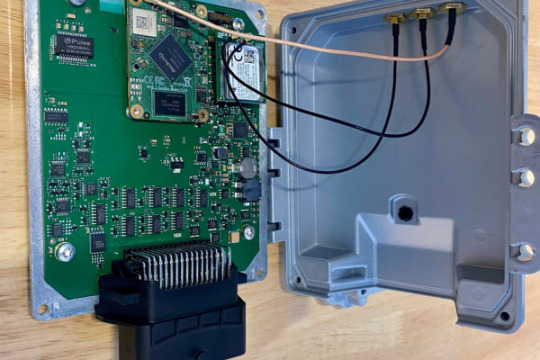
The brains of electric and hybrid cars are called vehicle control units, or VCUs. It is a powerful on-board computer that manages and arranges several essential functions to ensure a smooth and efficient driving experience. In addition to providing vital safety features, VCUs are crucial for maintaining battery health, optimizing energy consumption, and enhancing vehicle performance.
3. VCUs in Electric and Hybrid Vehicles: Features and Functions
Battery Management System (BMS): One of the primary responsibilities of the VCU is to oversee the Battery Management System. Monitoring the battery’s voltage, temperature, and charge level is necessary to maintain optimal performance and avoid overcharging or discharging, which may reduce the battery pack’s lifespan.
Powertrain Control: The energy flow from the battery to the internal combustion engine or electric motor is coordinated by the VCU, which also manages the powertrain. The management of torque, speed, and gear ratios is necessary to achieve optimal efficacy and performance.
Regenerative Braking: VCUs enable regenerative braking, which is the process of recovering kinetic energy during braking and converting it back into electrical energy to recharge the battery. The car’s range is extended, and its total energy efficiency is raised.
Driving Modes: VCUs offer a range of driving modes, such as eco, sport, and normal, allowing the user to adapt the vehicle’s performance to their preferences and road conditions.
Fault Detection and Diagnostics: VCUs continuously scan various car parts, identifying issues or malfunctions and providing diagnostic information to the driver or maintenance personnel so they can take immediate action.
4. How VCUs Work in Autonomous Driving
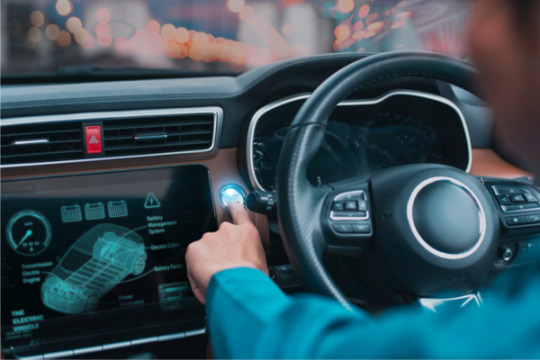
As we get closer to fully autonomous vehicles, VCUs are essential to ensuring safety and enhancing autonomous driving abilities. VCUs analyze data from several sensors, like cameras, radar, and LiDAR, to give real-time information on the surroundings of the vehicle. This information is necessary to implement advanced driver assistance systems (ADAS) and make features like adaptive cruise control, automated emergency braking, and lane-keeping possible.
5. Improvements at VCUs
Adapt to changes in technology. The efficiency and functionality of VCUs in electric and hybrid vehicles are continuously being improved by manufacturers, allowing for smoother integration with other vehicle systems. Modern algorithms and artificial intelligence enable the capacity to learn from driving behaviors, maximize energy consumption, and personalize the driving experience.
The physical size and weight of these components are being decreased by VCU manufacturers to make these units lighter and more suited to different vehicle architectures. Integration with cloud services and vehicle-to-vehicle (V2V) connectivity, which facilitates data exchange between automobiles and infrastructure for more intelligent mobility solutions, further improves VCU’s capabilities.
6. Challenges and Opportunities

Conclusion
VCUs in electric and hybrid vehicles have a bright future ahead of them. In the years to come, VCUs in electric and hybrid vehicles will be widely used due to the continuing advancements in energy efficiency, driving range, and safety regulations.
Although the technology for VCUs in electric and hybrid vehicles has advanced impressively, there are still certain issues to resolve. Standardization of VCU interfaces and communication protocols is required to guarantee interoperability with various car models and manufacturers. Cyber security is also a major issue because VCUs handle private information and regulate vital automotive systems. Strong cyber security measures must be put in place to thwart such threats.
VCUs have a bright future ahead of them in hybrid and electric cars. In the upcoming years, the broad adoption of VCUs in electric and hybrid vehicles will be facilitated by ongoing research and development that will raise safety requirements, driving range, and energy economy.
To review our excellent VCU products and services and to find out more about our software development capabilities for battery-specific applications, send an email to [email protected].
0 notes
Text
Hydrogen Vehicle Market Size, Demand and Trends Analysis by 2024-2030

The Hydrogen Vehicle Market Research Report 2024 begins with an overview of the market and offers throughout development. It presents a comprehensive analysis of all the regional and major player segments that gives closer insights upon present market conditions and future market opportunities along with drivers, trending segments, consumer behaviour, pricing factors and market performance and estimation and prices as well as global predominant vendor’s information. The forecast market information, SWOT analysis, Hydrogen Vehicle Market scenario, and feasibility study are the vital aspects analysed in this report.
The Hydrogen Vehicle Market is expected to grow at 64.7% CAGR from 2023 to 2030. It is expected to reach above USD 49.81 billion by 2030 from USD 0.56 billion in 2023.
Access Full Report:
https://exactitudeconsultancy.com/reports/14020/hydrogen-vehicle-market/
#HydrogenVehicle#HydrogenTechnology#FuelCellVehicle#CleanEnergy#ZeroEmission#SustainableTransport#GreenMobility#RenewableEnergy#HydrogenPower#FutureOfMobility#AlternativeFuel#HydrogenInfrastructure#HydrogenEconomy#TransportationInnovation#EcoFriendlyVehicles#ClimateAction#HydrogenFuel#FuelCellTechnology#ZeroEmissionVehicle#HydrogenCars
0 notes
Text
Yangwang U9: The Future of Electric Supercars is Here!
0 notes